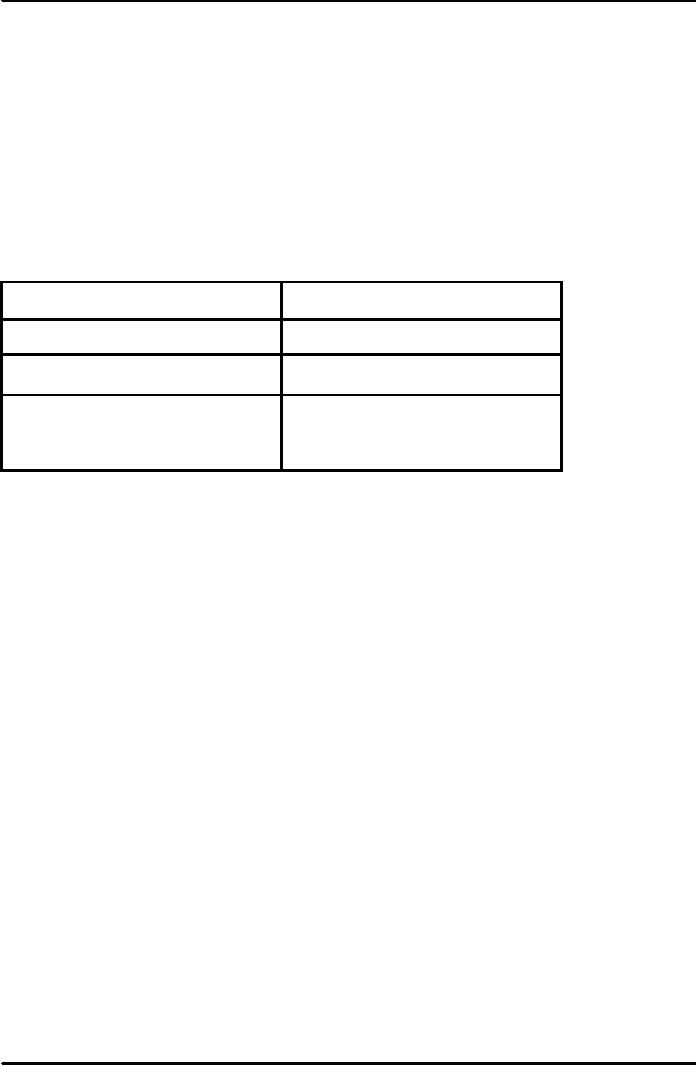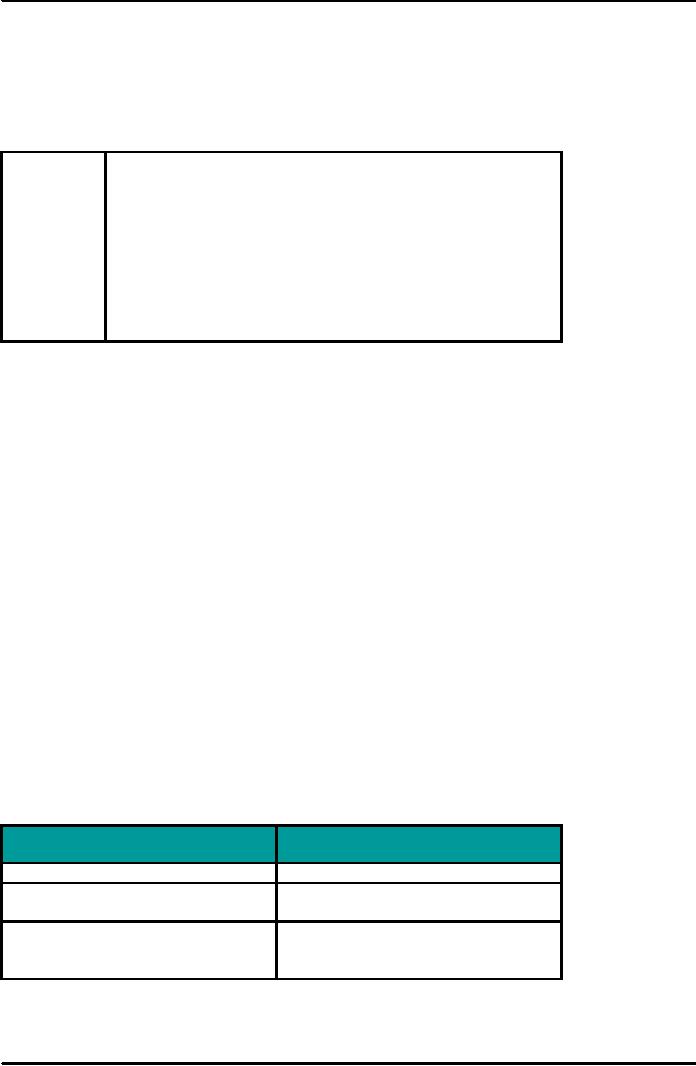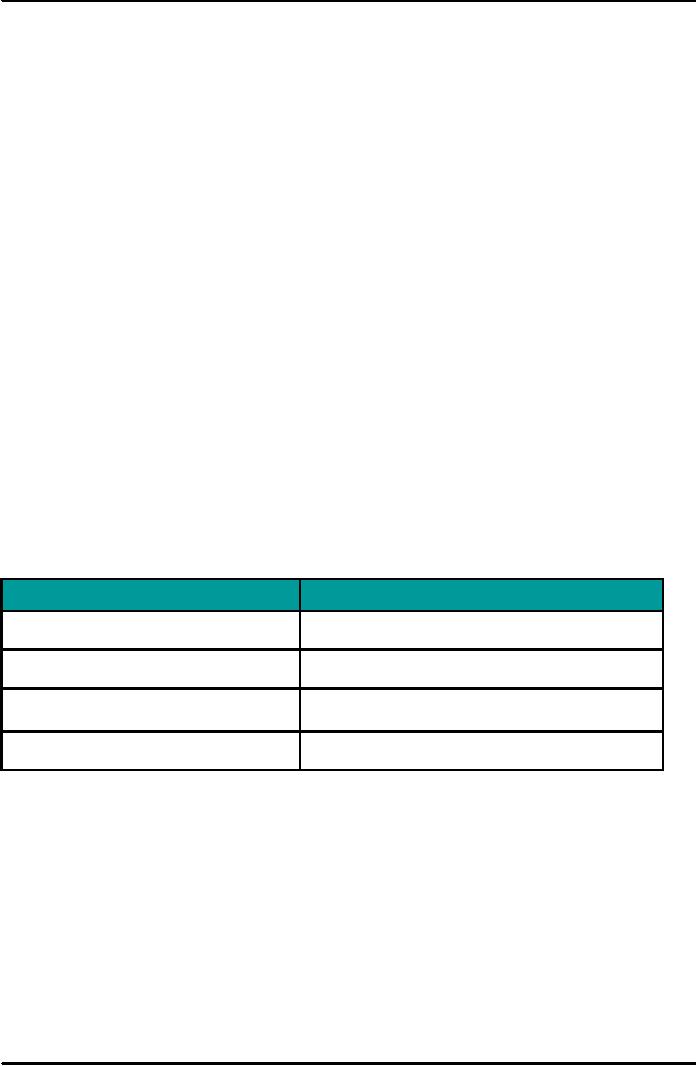 |
BASIC ORGANIZATIONAL PLANS:Writing Goodwill Letters |
| << COMMUNICATING THROUGH TECHNOLOGY:Email Etiquette, Electronic Media |
| LETTER WRITING:Direct Requests, Inquiries and General Requests >> |

VU
Lesson
19
BASIC
ORGANIZATIONAL PLANS
Direct
(Deductive) Approach
When
you think that your
audience will be interested in what
you have to say or willing
to cooperate with
you,
you can use the direct or deductive plan
to organize your message. It
means your present request
or the
main
idea in the beginning, which follows up
necessary details and then
you close your message
with a
cordial
statement of action you want. We
use this approach when the
request requires no special
tact or
persuasion.
Close to direct request is good-news
plan that is used to grant
requests, announce favourable or
neutral
information and exchange
routine information within or
between organizations. Look at the
outline
of
direct organizational plans and good-news
plan.
Basic
Organizational Plans
Direct-Request
Plan
Good-News
Plan
1.
State
the request or main
idea.
1.
Best
news or main idea.
2.
Give
necessary desirable details
for easy 2.
Explain
necessary and desirable
details
reading.
with
any helpful material.
3.
Close
with a cordial request for
specific 3.
End
positively and friendly
stating
action.
clearly
the desired action and offering
any
further
help. Give date of action if
necessary.
Basic
Organizational Plans
Dear
Sir,
We
intend to purchase a new
office copier. We would like to
consider a BHP copier and wonder if
you
have
a model that would suit our
needs.
Our
office is small, and a copier
would generally be used by
only three secretaries. We
run approximately
3,000
copies a month and prefer a
machine that uses regular
paper. We rarely need to run
off more than 25
copies
at any one time.
We
would also like to know
about your warranty and repair
service. We hope to hear from
you soon.
Basic
Organizational Plans
Dear
Mr. Gul,
In
a courier service, I am sending you
six copies of our catalog,
"Prime Gifts". I am very pleased
that you
want
to circulate it.
The
catalog explains everything but I do want
to say that for quantities of 20 or
more gifts we offer an
attractive
discount.
Please
let me know if I can be of
help in other ways.
Yours
cordially,
Supplying
Detailed Information on a
Service
Gentlemen,
Please
repair or replace my calculator watch,
Model C863, and send it to
me at the address above.
After
six months of use, the musical
alarm has quit
working.
63

VU
Enclosed
is my watch, a copy of the sales
receipt showing the date of
purchase, and your warranty,
which
guarantees
material and workmanship for
one year.
Yours
Sincerely,
Modified
Block Form
Attention
If
you're looking for the change to be
your own boss... or earn
extra income in your
spare
time... or a way to achieve independence
when you retire...
SMALL-
ENGINE
REPAIR could be the
answer.
Dear
Mr. Hafiz,
I
am delighted to know that you
are interested in our Executive
Book Club and am happy to
answer your
questions
about it.
Between
30 and 40 new books in the field of
management are made
available each year to the
members
of
the Executive Book club. And, as you
have mentioned, the topics treated vary
widely. From four to
six
of
these belong to personnel administration; in
addition, a similar number of general
management books
carry
some aspects of personnel
management.
Although
we have several specialized
book clubs but there
isn't yet one in personnel
administration.
Considering
the increasing demand, it is possible
that we will one day
establish a club in personnel.
Certainly,
there is a growing interest in this
field.
The
Circular enclosed contains complete
information about the Executive Book Club.
Please note that
the
average price of books distributed by the
club, if purchased separately, is about
Rs.300. However, as a
member
you would pay only about
three-fourth of that amount.
I
do hope you will want to become a
member of the Executive Book Club,
Mr. Hafiz. You can do so
by
filling
out the coupon on the back of the
circular.
Yours
truly,
Organization
Plan Direct
Request
Direct-Request
Plan
Good-News
Plan
1.
State
the request or main
idea.
1.
Best
news or main idea.
2.
Give
necessary desirable details
for easy 2.
Explain
necessary and desirable
details
reading.
with
any helpful material.
3.
Close
with a cordial request for
specific 3.
End
positively and friendly
stating clearly
action.
the
desired action and offering
any further
help.
Give date of action if
necessary.
64

VU
Good
News (and Neutral)
General
Plan
1.
Best
news or main idea
2.
Explanation
i.
All necessary details
ii.
Resale material
iii.
Educational material
iv.
Sales promotion
3.
Positive,
friendly ending
i.
Appreciation
ii.
Clear statement of action
desired
iii.
Easy action and motivation to
action
iv.
Willingness to help
further
v.
Dated action if desirables
Writing
Goodwill Letters
The
goodwill letter you write
will probably be successful
when you can answer
yes to the following
questions:
1.
If you were the reader,
would you honestly like to
receive this letter?
A
goodwill letter does its
job only when it makes the
reader feel good.
2.
Will the reader feel that
you enjoyed writing the letter
and that you mean everything
you wrote? If the
reader
feels bored, or indifferent tone, he or
she may doubt your
sincerity and
interest.
3.
Did
you keep the spotlight on the
reader?
To
make the reader feel important,
put your organization and yourself in the
background and
convince
the reader that you have
written the letter just
for him or her.
4.
Did you omit specific
sales material?
The
reader will feel let down if
your personal good wishes
are only a prelude to a sales
pitch.
Indirect
or Inductive Organizational
Plan
Organizational
Plan
Persuasive
request plan
Bad-News
Plan
1
Buffer
(using positive, pleasant rather
Attention
than
negative statement.
You
oriented theme, reader's
benefit.
2
Explanation
(reader's benefit, reasons
Interest
supporting
the negative decision)
Explain
the opening theme in greater
details
using psychological
appeal.
3
Decision
(expressed or implied in
Desire
clear
but tactful manner)
Give
relevant evidence to prove
your
claim
4
Helpful,
friendly and
positive,
Action
stressing
on goodwill
Close
with a clear action ending
that
suggests
a specific action the reader
may
take.
65

VU
General
Plan (Indirect)
1.
Buffer:
i.
Agreement
ii.
Appreciation
iii.
Assurance
iv.
Compliment
v.
Cooperation
vi.
Good News
vii.
Neutral Courtesy
viii.
Understanding
Agreement
Find
a point on which you and the
reader share similar views.
For example;
We
both know how hard it is to
make a profit in this
industry.
Appreciation
Express
sincere thanks for receiving
something. For
example;
Your
check for Rs.25000/- arrived
yesterday. Thank
you.
Cooperation
Convey
your willingness to help in
any way you realistically
can. For example;
Employee
Service is here to smooth the way for all of you
who work to achieve company
goals.
Fairness
Assure
the reader that you've
closely examined and carefully
considered the problem, or mention
an
appropriate
action that has already been
taken. For example;
For
the past week, we have carefully
monitored those using the
photocopying machine to see whether we
can detect any pattern
of
use that might explain its
frequent breakdowns.
Good
News
Start
with the part of your
message that is favourable. For
example;
A
replacement knob for your
range is on its way, shipped
February 10 via
TCS.
Understanding
Demonstrate
that you understand the
reader's goals and needs.
For example;
So
that you can more easily find
the printer with the
features you need, we are enclosing a
brochure that describes all
the
Panasonic
printers currently
available.
Here
are some other things to
avoid the following thing
when writing a
buffer:
1)
Avoid
saying no, An
audience facing the unpleasant news
right at the beginning usually
reacts
negatively
to the rest of the message, no matter
how reasonable and well
phrased it is.
2)
Avoid
using a know-it-all tone.
When
you use phrases such as
"you should be aware that," the
audience
expects
your lecture to lead to a
negative response and therefore
resists the rest of your
message.
3)
Avoid
wordy and irrelevant phrases
and sentences. Sentences
such as "We have received
your letter," "This
letter
is in reply to your request," and
"We are writing in response
to your request" are irrelevant.
You
make better use of the space by
referring directly to the subject of the
letter.
4)
Avoid
apologizing. An apology
weakens your explanation of the unfavourable
decision.
5)
Avoid
writing a buffer that is too
long. The
point is to briefly identify
something that both you
and your
audience
are interested in and agree
on before proceeding in a businesslike
way.
66

VU
Basic
Organizational Plans
Indirect
(Inductive) Approach
If
you think that your
message might upset your
reader or listener, you use the
indirect plan to ease
your
audience
into the part of your
message that shows that
you are fair-minded and
eager to do business
with
him
on some other terms. This
approach consists of four
parts:
(1)
A
buffer,
(2)
Explanation
of your decision supported by
reason
(3)
Negative
decision tactfully expressed or
understood with helpful
suggestion;
(4)
A
helpful, friendly, and
positive close.
Basic
Organizational Plans
As
good-news plan is similar to
direct-request plan, so is persuasive
plan to bad-news plan. Persuasion is
the
attempt
to change a reader's attitude, beliefs or
action in your favour. This
plan is used to influence the
readers
who may resist otherwise.
One way to organize persuasive
messages is the AIDA plan, which is
of
four
stages:
1.
Attention
2.
Interest
3.
Desire
4.
Action
In
the attention stage, you convince the
reader that you have
something interesting or useful for
him. In
interest
stage you explain how your
message is related to your
reader. In the desire stage
you provide
relevant
evidence to prove your claim
drawing attention to any enclosures.
And in the action stage you
close
the
message with an action ending that
suggests a specific action the reader
may take.
Outline
of the Indirect (Inductive)
approach
Outline
of the indirect (inductive) plan is given
below:
Organizational
Plan
Bad-News
Plan
Persuasive
Request Plan
1.
Buffer: (using positive, pleasant rather
than 1. Attention: you
oriented theme, reader's
benefit.
negative
statement.
2.
Explanation: (reader's benefit,
reasons 2. Interest: Explain the opening
theme in greater
details
supporting
the negative decision)
using
psychological appeal.
3.
Decision: (expressed or implied in clear
but 3. Desire: Give relevant
evidence to prove your
claim
tactful
manner)
4.
Helpful, friendly and positive,
stressing on 4. Action: Close
with a clear action ending that
suggests
goodwill
a
specific action the reader may
take.
Worksheet
Choosing
the Best approach. Each of the
following problems states a
purpose for writing a
letter.
Read
each purpose, then tell
(1) what the reader's reaction
will be (pleased, displeased, neutral,
little interest)
and
(2) which approach you as
the writer would take (direct,
indirect, or persuasive)
1.
To confirm a reservation.
Reaction:
________________ Approach:
____________________
2.
To refuse a request for
credit.
Reaction:
________________ Approach:
_______________
3.
To send a brochure that a client
requested.
67

VU
Reaction:
________________ Approach:
_______________
4.
To ask for an opportunity to
demonstrate your new
energy-saving device.
Reaction:
________________ Approach:
_________________
5.
To decline a speaking
invitation
Reaction:
________________ Approach:
________________
6.
To thank a customer for
placing a large
order.
Reaction:
________________ Approach:
________________
7.
To interest a potential customer in
advertising in your magazine
Reaction:
________________ Approach:
________________
8.
To replace a defective product
Reaction:
________________ Approach:
________________
9.
To reject a job applicant
Reaction:
________________ Approach:
_________________
10.
To ask for more information
about a product advertised on
TV.
Reaction:
________________ Approach:
_________________
11.
To compromise on an adjustment
Reaction:
________________ Approach:
_________________
12.
To collect an overdue account
Reaction:
________________ Approach:
_________________
13.
To congratulate a former classmate on a
promotion.
Reaction:
________________ Approach:
_________________
68
Table of Contents:
- COMMUNICATION:Definition of Communication, Communication & Global Market
- FLOW OF COMMUNICATION:Internal Communication, External Communication
- THEORIES OF COMMUNICATION:Electronic Theory, Rhetorical Theory
- THE PROCESS OF COMMUNICATION & MISCOMMUNICATION:Message
- BARRIERS IN EFFECTIVE COMMUNICATION /COMMUNICATION FALLOFF
- NON- VERBAL COMMUNICATION:Analysing Nonverbal Communication
- NON- VERBAL COMMUNICATION:Environmental Factors
- TRAITS OF GOOD COMMUNICATORS:Careful Creation of the Message
- PRINCIPLES OF BUSINESS COMMUNICATION:Clarity
- CORRECTNESS:Conciseness, Conciseness Checklist, Correct words
- CONSIDERATION:Completeness
- INTERCULTURAL COMMUNICATION
- INTERCULTURAL COMMUNICATION:Education, Law and Regulations, Economics
- INDIVIDUAL CULTURAL VARIABLES:Acceptable Dress, Manners
- PROCESS OF PREPARING EFFECTIVE BUSINESS MESSAGES
- Composing the Messages:THE APPEARANCE AND DESIGN OF BUSINESS MESSAGES
- THE APPEARANCE AND DESIGN OF BUSINESS MESSAGES:Punctuation Styles
- COMMUNICATING THROUGH TECHNOLOGY:Email Etiquette, Electronic Media
- BASIC ORGANIZATIONAL PLANS:Writing Goodwill Letters
- LETTER WRITING:Direct Requests, Inquiries and General Requests
- LETTER WRITING:Replies to Inquiries, Model Letters
- LETTER WRITING:Placing Orders, Give the Information in a Clear Format
- LETTER WRITING:Claim and Adjustment Requests, Warm, Courteous Close
- LETTER WRITING:When The Buyer Is At Fault, Writing Credit Letters
- LETTER WRITING:Collection Letters, Collection Letter Series
- LETTER WRITING:Sales Letters, Know your Buyer, Prepare a List of Buyers
- MEMORANDUM & CIRCULAR:Purpose of Memo, Tone of Memorandums
- MINUTES OF THE MEETING:Committee Members’ Roles, Producing the Minutes
- BUSINESS REPORTS:A Model Report, Definition, Purpose of report
- BUSINESS REPORTS:Main Features of the Report, INTRODUCTION
- BUSINESS REPORTS:Prefatory Parts, Place of Title Page Items
- MARKET REPORTS:Classification of Markets, Wholesale Market
- JOB SEARCH AND EMPLOYMENT:Planning Your Career
- RESUME WRITING:The Chronological Resume, The Combination Resume
- RESUME & APPLICATION LETTER:Personal Details, Two Types of Job Letters
- JOB INQUIRY LETTER AND INTERVIEW:Understanding the Interview Process
- PROCESS OF PREPARING THE INTERVIEW:Planning for a Successful Interview
- ORAL PRESENTATION:Planning Oral Presentation, To Motivate
- ORAL PRESENTATION:Overcoming anxiety, Body Language
- LANGUAGE PRACTICE AND NEGOTIATION SKILLS:Psychological barriers
- NEGOTIATION AND LISTENING:Gather information that helps you
- THESIS WRITING AND PRESENTATION:Write down your ideas
- THESIS WRITING AND PRESENTATION:Sections of a Thesis (Format)
- RESEARCH METHODOLOGY:Studies Primarily Qualitative in Nature
- RESEARCH METHODOLOGY:Basic Rules, Basic Form, Basic Format for Books